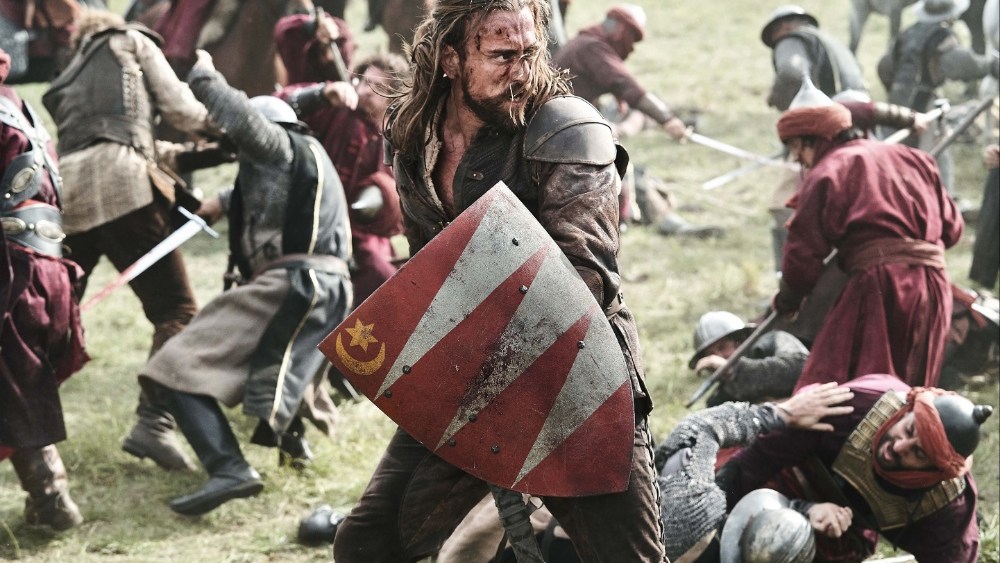With the epic sweep and palace intrigue of “Game of Thrones,” new 10-part Hungarian miniseries “Rise of the Raven” had its Italian premiere at the Italian Global Series Festival in Rimini this week. It tells the story of János Hunyadi (played by Gellért L. Kádár), the military leader who leads his forces against the Ottoman invasion in the 15th century. Variety sat down with veteran Hungarian-Canadian producer Robert Lantos, behind Oscar nominated films “The Sweet Hereafter,” “Being Julia,” “Eastern Promises” and “Barney’s Version,” to talk about his passion project.
You were born in Budapest, and this is a foundational Hungarian story. Is that what drew you to the show?
The central motivation was the story, which reverberates through the entire Western world. The reason the church bells ring at noon every day today is because when our hero beat the Ottomans in the Battle of Belgrade the Pope decreed in the year 1456 that henceforth church bells must ring at noon to celebrate. That’s a true legend that I knew about since childhood.
This is based on a series of novels by Mór Bán.
He wrote a 12-volume novel about this hero, and friends of mine gave it to me to read, and it’s thick. I haven’t read that much in Hungarian since I was a child. I said I’d read the first 20 pages, but I ended up reading all 12 books. I didn’t want to do it in English. I wanted the Hungarians to speak Hungarian, Turks to speak Turkish, Italians to speak Italian (episode 3 is set in Italy), even if it reduced market appeal. But I couldn’t do it like the last “Napoleon” film, with everybody speaking English.
But with streaming aren’t audiences more used to subtitles and foreign languages?
Well, I thought so too, but then I found out when a streamer offers both versions, I am told, only 20% chose the subtitled version.
Hungary has become a go-to location for lots of productions so that must have helped.
I shot in Hungary, five, six times before this, but never in Hungarian. First, it’s got a very generous rebate, but it also has a history of filmmaking going back to when motion pictures first began, great infrastructure, great crews, studios. It still has a film lab. Canada doesn’t. Most countries don’t.
How long did it take to put the project together?
I read the books 12 years ago. And I put it in motion. A year of shooting, preceded by three years of writing, followed by a year and a half of post-production.
This is a series that tells the story of a conflict between the East and West. How do you avoid it not falling into a jingoistic trap?
My first instruction to the writers’ room was: we have no saints and no devils. We have no perfect people. Everybody’s flawed. We take sides. We’re not on the side of the invaders. The whole world can relate that those who are invading deserve to not win because if they do, the losers become slaves. So that is clear. But the way we represent the Ottoman Empire is not as wicked. The first time you see Murad the Magnificent (Murathan Muslu), we see the face of this handsome, beautiful man with transparent eyes and a kind face.
You’ve had a long, successful career. How do you feel the business has changed?
The production process hasn’t changed dramatically. What has changed is the business itself, and that is unrecognizable. I had the good fortune to come of age professionally during the glory days of independent cinema, the late 70s-80s. It’s polarized. You have cookie cutter films and films that live essentially for film festivals. Out of 3,000 independent films made, 99.9% of the independent films don’t see the light of day outside of festivals. “Anora” is the exception. I wouldn’t want to be starting out today.
Why not?
I managed to get a meeting with the then head of MGM to pitch “In Praise of Older Women.” I walked into his huge office, and he offered me scotch, he lit up a cigar, he put his feet up on his desk, and then he said, “Okay, kid, what have you got?” He didn’t buy it, but that’s how that was. Today, if you would like to pitch a project to Netflix, you’ll meet with two or three mid-level executives in a meeting room, that’s one of a dozen identical meetings lined up in a corridor. You’ll wait in a lobby until your turn comes, along with 50 other people like in a doctor’s office. You tell your story, and they take notes. They don’t say anything. There’s no response: no “Yes” or “No.” There’s just notes. Which will be fed into the infernal machine.
Was that the case of ‘Rise of the Raven’?
When I made the decision to not shoot in English, the fate was sealed. No global player was able to buy it up. But it has turned into the biggest hit in the history of Hungary. The actors can’t walk the street now, and they were all essentially unknown, right? The star we fished out of a little theater company in Transylvania. I read in one of the newspapers a history teacher saying, for the first time, students are interested in history because they’re all watching the show: it has entered the national conversation. It did very well in Austria. We did spectacularly in Slovenia. And then it started in Germany last week. Canada and Australia in the fall. And with RAI in Italy. It’s spreading its wings around the world, which was the idea.
This interview has been condensed and edited for clarity.
Read the full article here



